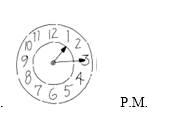For some Americans, the political concepts that are set forth in the Declaration of Independence—particularly the concept of equality—have become standards by which American institutions should be measured. For example, as you will see, the Constitution did not allow for equal treatment for many Americans, including African Americans (who were not considered citizens) and women. The disparity
between the declaration's promise of equality and the Constitution's unequal treatment of Americans set the example for future conflicts over the issue of equality. Neither Thomas Jefferson nor the framers of the Constitution interpreted the word equality to mean equal income. Rather, they envisioned a nation in which all citizens had what we would now call equal opportunity. Equal opportunity promotes other American ideals, such as individualism and self-reliance. It also often leads to a meritocracy based on individual talent and effort. Those who have the advantage of more education, more money to invest in an enterprise, greater talent, and higher levels of energy will have a competitive edge and come out the winners. In recent times, some people have been unwilling to accept the results of simple equality of opportunity if it creates a gross maldistribution of wealth. Some have argued that the founders, who lived in a largely agrarian economy, could not have envisioned the huge disparities in income in an industrial age and certainly would not have thought them consistent with democratic government. Some reformers have thus backed the creation of a welfare safety net by which the government protects and promotes the economic security of its citizens. Other reformers have tried to level the playing field through programs known as "affirmative action." These programs give preferences to minorities and other groups to make up for past discrimination. Those who favor affirmative action views its opponents as heartless individualists, who would let other Americans remain in poverty because they lack the talent, luck, or education to rise above it. Opponents of affirmative action argue that such programs perpetuate unequal treatment and emphasize racial divisions in society. The overall organizational pattern of the passage is
a. listing.
b. classification.
c. cause and effect.
d. process.
c
You might also like to view...
Description #3
A. Image A B. Image B C. Image C D. Image D
A thesis statement can be in the form of a question
Indicate whether the statement is true or false
Tomo un sándwich __________________ todos los lunes.
Complete the sentence using the time shown on the clock and specifying whether it is morning, afternoon, or evening.

What will be an ideal response?
Which of the following sentences best illustrates division?
a) In my house I have nine rooms, including my kitchen, two bathrooms, a master bedroom, two children's bedrooms, a laundry room, a den with books and a television, and a living room that I use for company. b) It was difficult to decide which of the 38 girls who tried out should be picked for the soccer team. c) Since I organized my big pile of books yesterday, I found I have seven sociology textbooks, four romance novels, two mystery novels, three self-help books, two children's storybooks, and one poetry book. d) I want to plant daisies on the right side of my yard and impatiens on the left side.